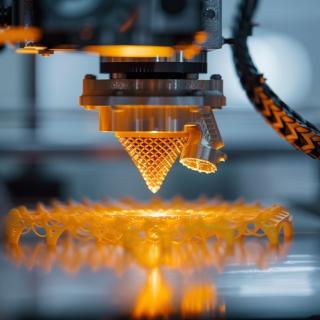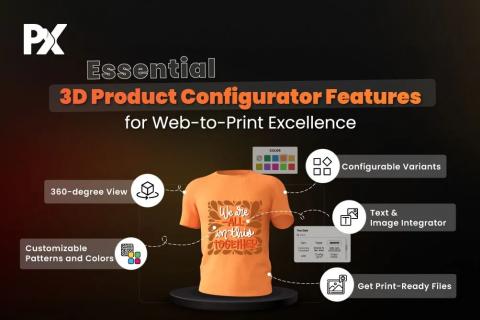3D IC and 2.5D IC Packaging Market: Innovations Driving
Advanced Semiconductor Solutions (2024–2032)
The 3D
IC and 2.5D IC Packaging Market is at the forefront of semiconductor
innovation, catering to the growing demand for high-performance and compact
electronics. The market size was valued at USD 20.99 billion in 2022,
with projections to grow from USD 22.13 billion in 2023 to USD 35.7
billion by 2032, at a compound annual growth rate (CAGR) of 5.45%
during the forecast period (2024–2032).
With applications spanning consumer electronics,
telecommunications, automotive, and healthcare, 3D and 2.5D IC packaging
technologies are becoming pivotal in addressing industry needs for performance,
energy efficiency, and miniaturization.
Key Market Drivers
- Demand
for High-Performance Computing (HPC):
The rapid adoption of artificial intelligence (AI), machine learning (ML), and data analytics has necessitated advanced chip architectures. 3D IC and 2.5D IC packaging offer enhanced processing power and bandwidth, enabling efficient data handling in HPC applications. - Miniaturization
of Consumer Electronics:
The push for smaller, more powerful devices such as smartphones, wearables, and tablets drives the need for compact IC packaging solutions. 3D and 2.5D IC technologies deliver space-saving designs without compromising performance. - Growth
in IoT and 5G Networks:
The proliferation of the Internet of Things (IoT) and the global rollout of 5G technology require chips with high-speed data transfer and low latency. Advanced IC packaging plays a critical role in enabling these functionalities. - Energy
Efficiency Requirements:
Industries are increasingly prioritizing energy-efficient solutions. 3D IC and 2.5D IC packaging reduce power consumption by integrating components more efficiently and reducing signal loss. - Advancements
in Semiconductor Technology:
The evolution of through-silicon via (TSV) technology and wafer-level packaging has enhanced the feasibility and performance of 3D IC and 2.5D IC architectures, accelerating market growth.
Market Segmentation
By Packaging Type:
- 3D
IC Packaging:
- Integrates
multiple chips in a stacked configuration.
- Ideal
for memory modules, GPUs, and AI accelerators.
- 2.5D
IC Packaging:
- Combines
multiple chips on a silicon interposer for enhanced connectivity.
- Commonly
used in FPGAs and high-speed processors.
By Application:
- Consumer
Electronics: Smartphones, tablets, wearables.
- Automotive:
Advanced driver-assistance systems (ADAS), infotainment.
- Telecommunications:
5G infrastructure, networking equipment.
- Healthcare:
Medical imaging, wearable health monitors.
- Data
Centers: HPC, cloud computing, AI processors.
By End-User:
- Semiconductor
Manufacturers: Innovating IC designs to meet performance and cost
demands.
- OEMs:
Incorporating advanced packaging to enhance product features.
- Foundries:
Providing specialized manufacturing capabilities for 3D and 2.5D IC
technologies.
Regional Analysis
- Asia-Pacific
(APAC):
The largest market due to the presence of major semiconductor manufacturers and electronics companies in countries like China, Taiwan, South Korea, and Japan. The region benefits from extensive R&D and government investments in semiconductor technology. - North
America:
A key hub for technological advancements, with a focus on HPC and AI applications. The U.S. leads in the development and adoption of 3D and 2.5D IC packaging. - Europe:
Growth is driven by the automotive and industrial sectors, where advanced IC packaging enhances automation and connectivity. - Rest
of the World (RoW):
Emerging economies in the Middle East, Africa, and South America are increasingly adopting advanced semiconductor technologies to support digital transformation.
Challenges
- High
Production Costs:
The complex manufacturing processes involved in 3D IC and 2.5D IC packaging lead to higher costs, posing a challenge for widespread adoption. - Thermal
Management Issues:
As chips become more densely packed, managing heat dissipation effectively remains a technical hurdle. - Supply
Chain Disruptions:
The global semiconductor supply chain has faced disruptions due to geopolitical tensions and material shortages, impacting production and delivery timelines.
Future Opportunities
- Integration
with AI and ML:
As AI and ML applications expand, the demand for high-performance chips with advanced packaging will grow exponentially. - Emergence
of Chiplet Architectures:
Chiplet-based designs, which utilize 2.5D IC packaging, are gaining traction as a cost-effective alternative to monolithic ICs. - Advanced
Materials:
Innovations in materials like graphene and silicon carbide can enhance the performance and reliability of 3D and 2.5D IC packages. - Automotive
Electrification:
The shift towards electric vehicles (EVs) and autonomous driving systems presents significant growth opportunities for advanced IC packaging in the automotive sector.
















